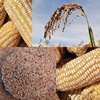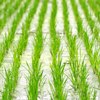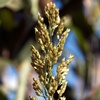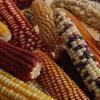Crime wave: witnesses say molecular breeding and comparative genomics are the 'weapons' used in the ongoing attacks, clear masterminds behind this




A motley crew of cereal suspects have been rounded up at research stations around the world. The cereal gang is not working alone: maize, rice and sorghum, are being aided and abetted by comparative genomics and molecular breeding.
Their crime? They are jointly and severally charged with relentless assault and battery on drought and other stresses, including aluminium toxicity, phosphorus deficiency and disease. The motley crew is drawing upon and utilising the various specialities, traits and other individual advantages of each member to bludgeon their victims and adversaries.
Below are briefs of the suspects' statements taken at research stations and transmitted via blogpost testimonials, with particulars on each cereal suspect, the incident description and the scientific mastermind behind each incident:
- First up, we have amazing maize, fighting the good fight against drought with the help of MARS. Not the Roman agricultural guardian and god of war (though these characteristics are fitting here!), but rather, marker-assisted recurrent selection – the molecular-breeding approach being used by Bindiganavile Vivek (CIMMYT) and his team in the battle to produce drought-tolerant maize varieties in Asia. More
- Next, we move on to the Sorghum Research Initiative and its array of researchers around the world – where not only sorghum panicles but also rich research partnerships are established ‘evergreens’! More
- We stay with sorghum to meet Malian researcher Niaba Témé (IER), and trace his circuitous sorghum saga from the Sahara to Asia, America, Oceania and back again as he searches for a way to make a drop in the desert go further. More
- Still with sorghum, read the profile on cereal scientist Eva Weltzien (ICRISAT), whose novel research, inspired by a Nobel, uses nouvelle methods to fire a noble cause. It reads like a novel, and we have no doubt you too will be greatly inspired! More
- Crossing over now to the tri-cephalous Comparative Genomics Research Initiative (RI), which, true to its nature strikes a triple whammy! This RI simultaneously takes on three cereals – maize, rice and sorghum, across three continents – the Americas, Africa, and Asia. It's a lifetime achievement of sorts: the work spans the entire decade of GCP’s existence, tackling phosphorus deficiency and aluminium toxicity in all three cereals. Behind the work is a tremendous team of scientists. This thriller is a must read! More
- Now we are well and truly in comparative genomics territory, starting first on Brazilian soil where science swings and shakes to a samba beat! Meet Claudia Guimarães (EMBRAPA) to hear how her passion for science strikes the balance between perfectly choreographed studies and a research rhythm that adapts to changing situations across crops. More
- From the American continent we fly to Africa again to meet scientist Sam Gudu (Moi University) in his native Kenya, where his story begins on the shores of Lake Victoria. Focusing on maize (albeit with a solid side-track to sorghum), Sam’s life-work has seen him getting his hands dirty, whether in the farm or in the complex maze of comparative genomics in cereals working with a top-notch international team. More
- Back again we fly to America via Dover, like bluebirds over “the prehistoric remains of dead protozoan” as the young Leon Kochian (Cornell) recalls, revealing his love for biology from a tender age! Read all about Leon’s tremendous trajectory and multifaceted modus operandi through his lab and field work, and through his many hats as GCP’s Product Delivery Coordinator for the Comparative Genomics Research Initiative, as Cornell's representative on the GCP Consoritum Committee, and as Director of the Robert W Holley Center for Agriculture and Health (USDA). More
- Finally and very fittingly, a blast from the past to fuel the future, while still keeping it Cornell. Get to know Rebecca Nelson, a Cornell-based GCP researcher on maize and rice back in the early days of the Programme. As project leader, Rebecca's inter-disciplinary approach had her and her team dissecting disease resistance and drawing up the plans of genetic architecture in their bid to improve cereals. Long after her GCP project ended, her GCP connections have however endured, and continue into the future. More
We think you’ll agree that these cereal suspects are certainly culpable of of the heinous crimes of ruthlessly attacking drought, aluminium toxicity, phosphorus deficiency and disease, resulting in more yields and hardier crops. So, on balance, it seems that their ‘crime’ is nothing more than poetic justice given the graver and grievous ills wrought by the so-called 'victims', be they rich in aluminium and dehydration, or poor in phosphorus and hydration. But what say you, the jury?
